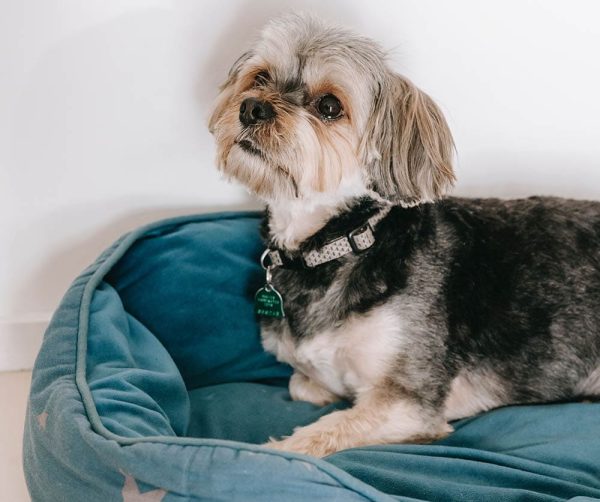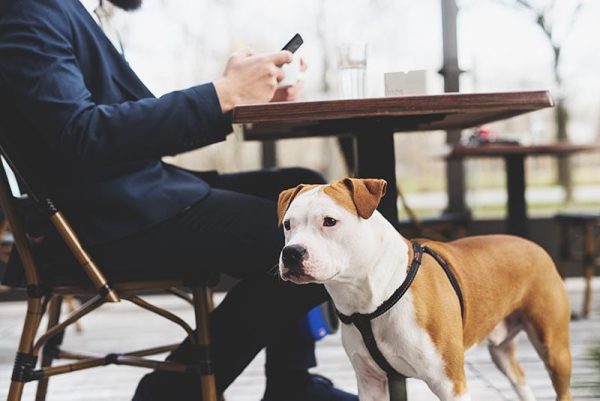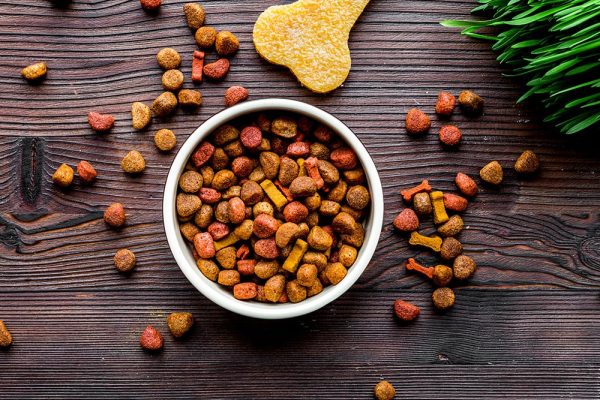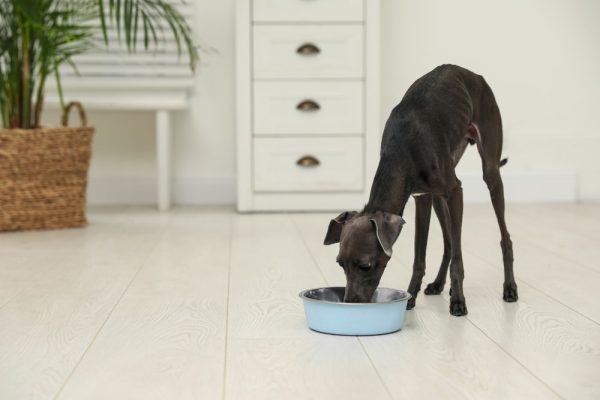In this article
View 8 More +The Giant Schnauzer is a dog of dignified nature. They take their life rules very seriously and implant them firmly in their family connections. The Giant Schnauzer is a guard dog at heart, one of the many interesting breed traits.
Not only is this dog substantial in size, but they are also significant in spirit. We hope that you learn something about the Giant Schnauzer and see if this fantastic breed is right for you.
Breed Overview
Height:
23–27 inches
Weight:
55–110 pounds
Lifespan:
12–15 years
Colors:
Black, salt and pepper
Suitable for:
Experienced owners, active lifestyles, country living
Temperament:
Patient, alert, assertive, loyal
The Giant Schnauzer is undoubtedly what it claims—giant! Unlike the Great Dane or Saint Bernard, which could be considered gentle giants, the Giant Schnauzer takes their duties very seriously, and they definitely don’t have time for reindeer games.
But a Schnazuer in its natural environment is a loving, attentive breed that is very interested in their owners and what they’re doing. You will have irreplaceable memories of incredible companionship.
Giant Schnauzer Characteristics

Giant Schnauzer Puppies

Anytime you get a Giant Schnauzer, you should always purchase them from a reputable, knowledgeable breeder with an extensive history of successful litters. You can’t skip this when it comes to solid breeding.
Their temperament and overall health requires very good breeding skills in the beginning. It is important to meet both parents to see what possibilities your puppy has for the future. They might not act like both parents exactly, but they can carry genetic traits of both.
It is likely rare that you would ever find a purebred Giant Schnauzer at a rescue shelter, but it might happen, depending on your region. Animals can be rehomed for several reasons, and many people get into predicaments where having a dog is just not feasible.
You can always check out local rescues and shelters to see if there’s any availability from this particular breed. The most likely scenario, however, is that you will get the Giant Schnauzer puppy from a reputable breeder, which can certainly cost a pretty penny.
They might also be rare, making it very hard to find a Giant Schnauzer breeder in your area. Keep in mind that this might mean travel for some people. As puppies, the Giant Schnauzer might be a little more relaxed, but definitely requires a substantial amount of exercise.
They need early socialization to become exceptional dogs later in life. So make sure that you take your Schnauzer buddy on plenty of adventures early on once they have been fully vaccinated. During the first several weeks of life, you should never let them out in public spaces, as it can expose them to deadly viruses such as parvo. A dog is not fully vaccinated from parvo until it is a few months old. It is important to get all of the required vaccinations to prevent unwanted illness.

Temperament & Intelligence of the Giant Schnauzer 🧠
The Giant Schnauzer is an incredibly intelligent breed that can continuously grow in their skill set. They will be hard to manage for certain people as they require a dominant and certain hand during training.
If you show any signs of submissiveness, it could cause them to undermine your role as the leader and take charge themselves. While this won’t make their loyalty to you any less, they will feel like they have to take care of you instead of the other way around.
It is important that they learn their place in the hierarchy so you can develop a healthy and sturdy relationship with no power differential.
Are These Dogs Good for Families? 🏡
The Giant Schnauzer is an incredibly loyal and affectionate breed, getting extremely close and forming irreplaceable bonds with their family members. They are very docile and affectionate towards those they are close with, but might be suspicious of unfamiliar faces.
The Giant Schnauzer is a hit or miss when it comes to people. Some of them are very friendly with strangers, while others require a lot of time to warm up. More dominant Giant Schnauzers might never acclimate very well to a strange face. It is crucial to acclimate them to others early so they don’t develop these stern and rigid ideas about outsiders.
However, if you’re looking for a guard dog with a sound mind that can protect your household, this is certainly a dog to consider. If the Giant Schnauzer is raised alongside children, they will bond with them wonderfully. However, no dog should ever be left alone with children unattended, as anything could happen.

Does This Breed Get Along With Other Pets? 🐶 😽
The Giant Schnauzer can make an amazing family companion to people, and they can also get along quite well with other pets—possibly. The Giant Schnauzer needs to be wholly socialized early on to avoid any prey-driven tendencies.
They also might be suspicious of strange dogs, so they must understand discernment early on. As with any dog, it’s essential to never leave them unsupervised with any pet. A Giant Schnauzer that’s never been acclimated to other pets might be very aggressive towards unknown dogs, cats, or other animals.
Even dogs with proper socialization may never be too excited about unknown animals in their territory. You should always supervise any animal together, but you should especially do so with a breed such as this.

Things to Know When Owning a Giant Schnauzer:
Food & Diet Requirements 🦴
A Giant Schnauzer will require a high protein, calorie-rich meal to keep them healthy. Since they are a large breed, they grow heavy bones quickly and require an age-appropriate diet.
Giant Schnauzers under 2 years of age should have high-quality dog food that will supply the correct nutrients to nurse their growing brains and bodies. There are still tons of viable options online and in store for dry and canned food diets.
For a Giant Schnauzer specifically, dry kibble is going to be the most cost-effective option. However, some are catching more onto fresh food diets, which are typically subscription-based services.

Exercise 🐕
Exercise is going to be a crucial component in your Giant Schnauzer’s day. They thrive on activity and need roughly an hour to an hour and a half of exercise per day. Not only is physical activity significant to their overall health, but mental stimulation is equally as vital. The Giant Schnauzer is a dog of extreme wit, agility, and alertness. They will need it to be stimulated appropriately to harness these particular instincts.
Training 🦮
The Giant Schnauzer is a highly trainable canine. They have an extremely good focus and an impeccable loyalty to their owner. This dog’s devotion to their owner makes them highly trainable, especially if you have experience.
Inexperienced dog owners can enjoy this breed, permitting a willingness to invest in professional training. With the right guidance, the Giant Schnauzer can be highly obedient and willing to obey—but it will certainly take some convincing.
These dogs are designed to learn but developed to make swift decisions and act accordingly. Because the training style can be a little unique to standard canines, many people find that they need help even if they have previous canine experience.

Grooming ✂️
Grooming the Giant Schnauzer is certainly a task. Many people who own these types of dogs take their pups to a professional groomer. They can give them a fanciful haircut and the whole nine yards. You can learn how to perform haircuts at home, if you so prefer.
There are many upsides to having a Schnauzer in the grooming department. First of all, their hair is, of course, capable of matting or tangling, but regular brushing generally prevents it. They are also considered hypoallergenic and shed very little.
We want to point out that no dog is ever truly hypoallergenic, but these dogs certainly irritate allergy sufferers less than standard dogs. Schnauzers themselves can have rather tender skin, so always use fragrance-free, natural products to prevent irritation.
- Also see: Best Dog Shampoos – Reviews & Top Picks
Health and Conditions ❤️
Your Giant Schnauzer will require annual vet care. When you first bring them home, they will visit the vet quite often, going for parasite prevention, routine vaccinations, spay/neuter surgery, and even microchipping.
As they age, they must come in for at least an annual check-up or possibly more often should health issues arise. These dogs are generally healthy but do carry some genetic health issues. The one way to navigate away from genetic health issues is to make sure both parents are adequately tested for common issues.
Many families are opting for pet insurance as a way to alleviate the cost of vet bills. Should any random illness or injury arise, you are covered in these moments of crisis. You can look through your own insurance company to see if you can bundle your pet in. Or, you can look at quotes from different companies to see if one matches your budget and need.
- Glaucoma
- Hip dysplasia
- Autoimmune thyroiditis
- Autoimmune hemolytic anemia
- Cancer of toes

Male vs Female
One of the first differences you’ll notice right off hand is that the male Schnauzer is substantially larger than the female. They have incredibly strong, lean, muscular bodies with a firm presence.
The females have a lean, muscular frame as well, but tend to be smaller and weigh less. Both sexes might have a little issue with dominance, either with other dogs or with strangers. It is important to address any territorial behaviors early for the best results.
The breed doesn’t necessarily have any bearing on overall personality, so keep that in mind when you’re picking out your puppy. All dogs, male or female, should get spayed or neutered before they reach sexual maturity.
Certain vets like to wait with larger breed dogs for their entire structure to develop before the surgery occurs. It will be up to the individual vet, and you can address any particular concerns you have as necessary.
3 Little-Known Facts About the Giant Schnauzer
1. There are a total of three sizes of Schnauzer.
Much like the Poodle, the Giant Schnauzer comes in three different sizes. There is the miniature, standard, and giant. All of them share many of the same characteristics, although the smaller ones can be quite hyper in comparison to the larger ones.
2. The Giant Schnauzer was bred for work.
They were designed to fulfill tasks, primarily driving cattle from the farm to the market. They were also very talented at carting goods and helping out farmers with daily chores.
3. The Giant Schnauzer is bearded.
The Giant Schnauzer gets its classic, dapper look from its scruffy beard. You can have it well-manicured or leave it scruffy—it’s distinguished either way.

Final Thoughts
Now you understand what the Giant Schnauzer is all about. They can make amazing family, companions, permitting they have the right type of training. They are naturally protected by nature and will require a firm hand.
Once they understand manners, they can interact with strangers and other pets more efficiently.
Featured Image Credit: Eliska Zeiskova, Shutterstock


















